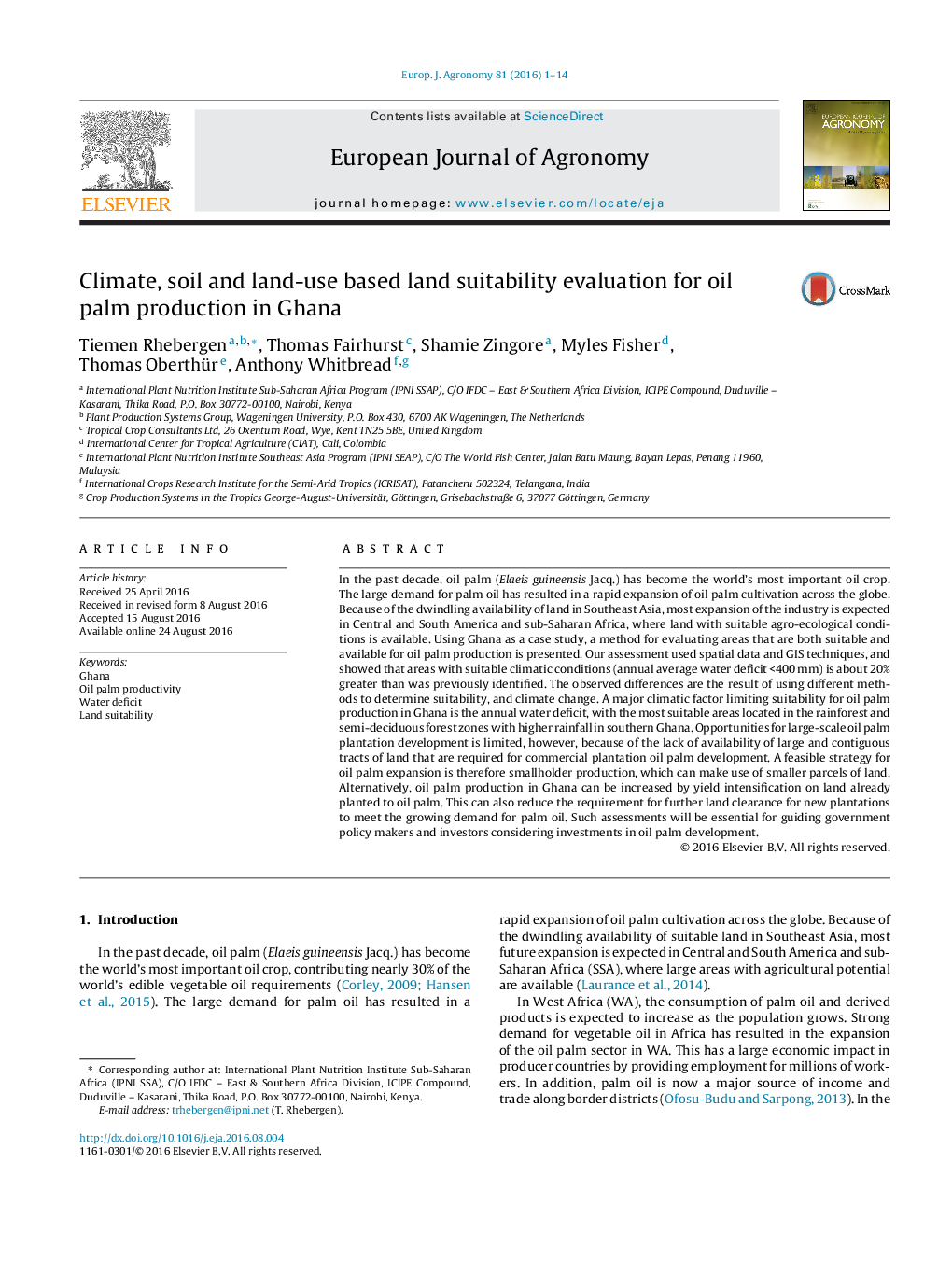| کد مقاله | کد نشریه | سال انتشار | مقاله انگلیسی | نسخه تمام متن |
|---|---|---|---|---|
| 4508650 | 1624444 | 2016 | 14 صفحه PDF | دانلود رایگان |
• The development of a methodology to identify suitable and available areas for oil palm production in Ghana and West Africa.
• An analysis of the main constraints to oil palm production in Ghana.
• Water deficit is the major factor limiting oil palm production and yields in Ghana.
• Expansion of oil palm production in Ghana is limited by the availability of land.
In the past decade, oil palm (Elaeis guineensis Jacq.) has become the world’s most important oil crop. The large demand for palm oil has resulted in a rapid expansion of oil palm cultivation across the globe. Because of the dwindling availability of land in Southeast Asia, most expansion of the industry is expected in Central and South America and sub-Saharan Africa, where land with suitable agro-ecological conditions is available. Using Ghana as a case study, a method for evaluating areas that are both suitable and available for oil palm production is presented. Our assessment used spatial data and GIS techniques, and showed that areas with suitable climatic conditions (annual average water deficit <400 mm) is about 20% greater than was previously identified. The observed differences are the result of using different methods to determine suitability, and climate change. A major climatic factor limiting suitability for oil palm production in Ghana is the annual water deficit, with the most suitable areas located in the rainforest and semi-deciduous forest zones with higher rainfall in southern Ghana. Opportunities for large-scale oil palm plantation development is limited, however, because of the lack of availability of large and contiguous tracts of land that are required for commercial plantation oil palm development. A feasible strategy for oil palm expansion is therefore smallholder production, which can make use of smaller parcels of land. Alternatively, oil palm production in Ghana can be increased by yield intensification on land already planted to oil palm. This can also reduce the requirement for further land clearance for new plantations to meet the growing demand for palm oil. Such assessments will be essential for guiding government policy makers and investors considering investments in oil palm development.
Journal: European Journal of Agronomy - Volume 81, November 2016, Pages 1–14
